DC Microgrid/Yeti
| Goal Zero Yeti Hacking Release status: beta [box doku] | |
|---|---|
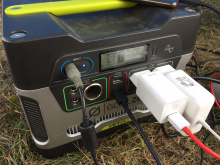
| |
| Description | Taming the Yeti portable power thingie |
| Author(s) | Severin |
We borrowed a Goal Zero Yeti 400 "power bank" from our friends at Rehab Republic for CCCamp19. It has ~400Wh of battery capacity, and an inverter, which seemed like a nice addition to our solar setup.
DIY Solar Panel charging
Unfortunately, Goal Zero uses a proprietary "8mm connector" for its charging port. Thanks to @northalpha on Twitter, we figured out the connector is compatible to the round Lenovo Thinkpad charger connector (the "newer" one with the additional pin in the middle). The proper measurements for this connector seem to be 7.9mm outside diameter, 5.5mm inside diameter, and 0.8mm for the middle pin.
Since we had quite a few of Lenovo PSUs in our PSU bin at the lab, we took one, cut the cable off, and connected it very professionally to a 100W solar panel.
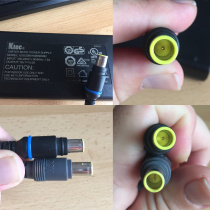 |
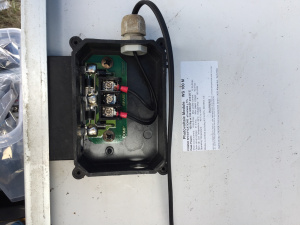 |
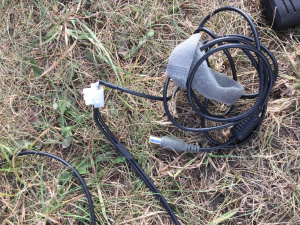 |
IMPORTANT: The charging port on the Yeti 400 can deal with up to 29V, so make sure you have solar panels that don't go over that.
Maximum power we got out of the panel into the Yeti were 88W, which was much more than we expected, especially since the panel we used was quite old.
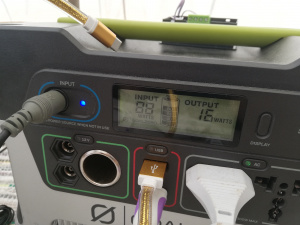 |
Other potential hacks
- Power metering for charging
- Integration into DC microgrid, via Powerpole ports or the 12V socket up front.
